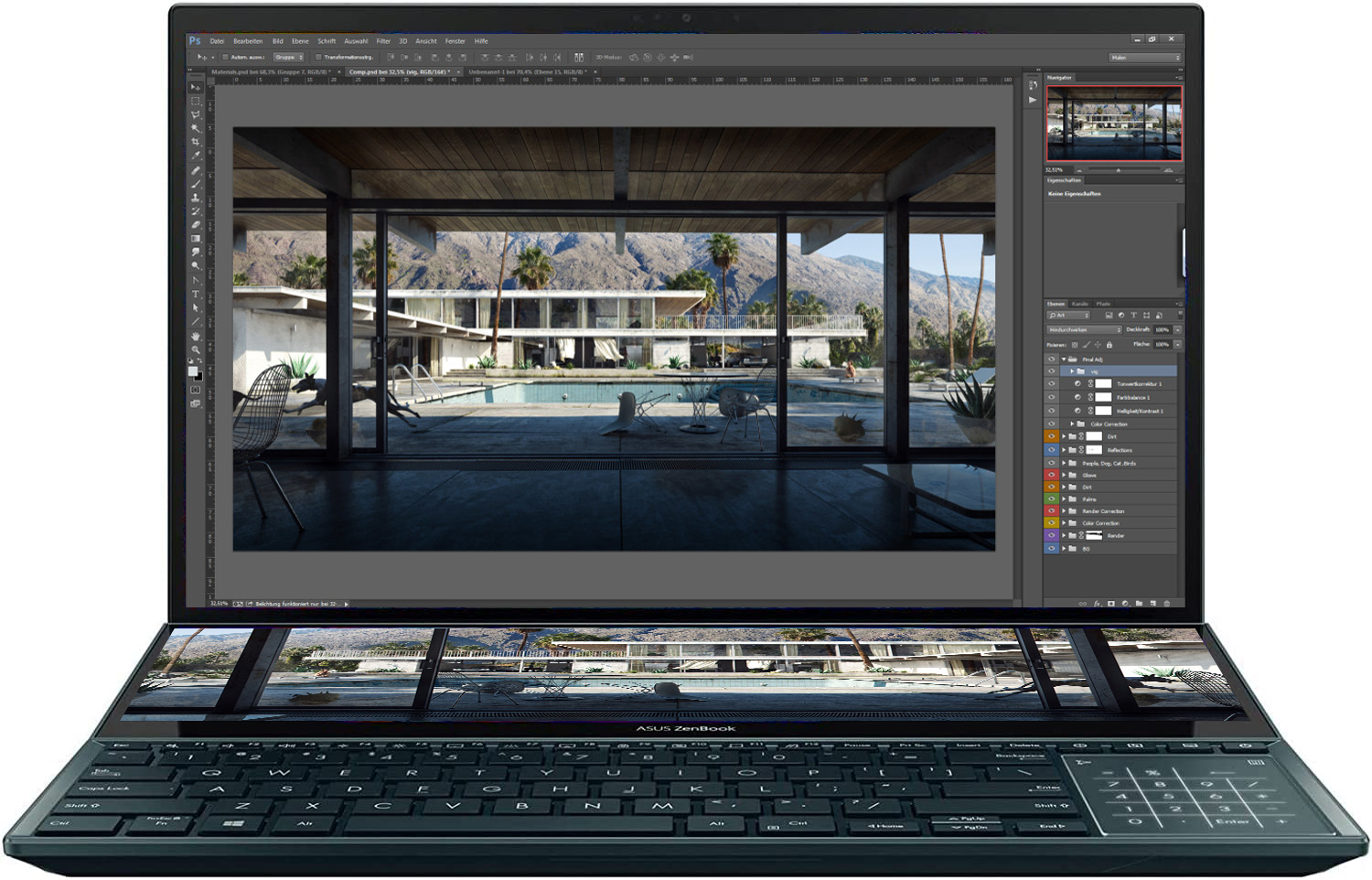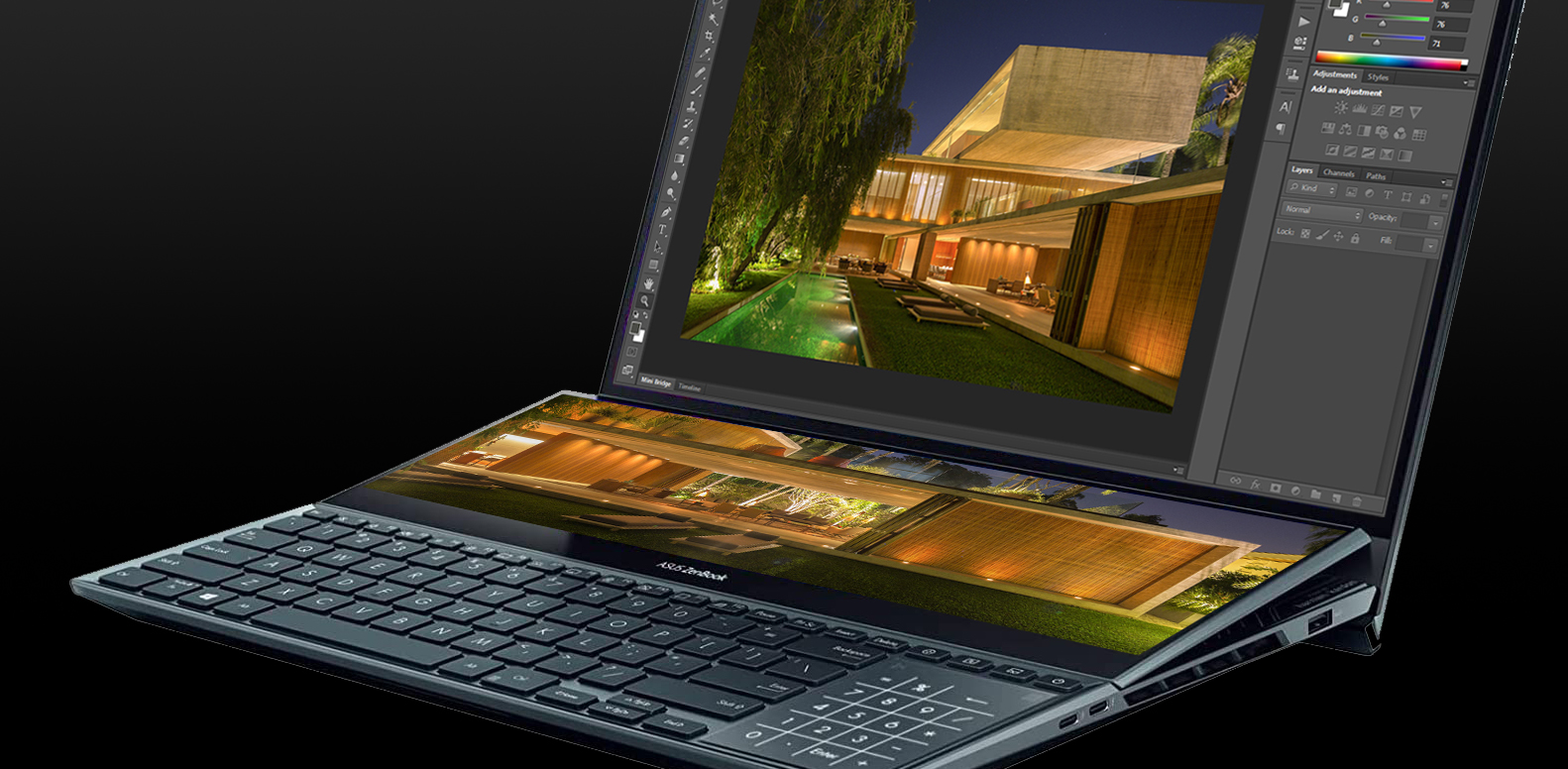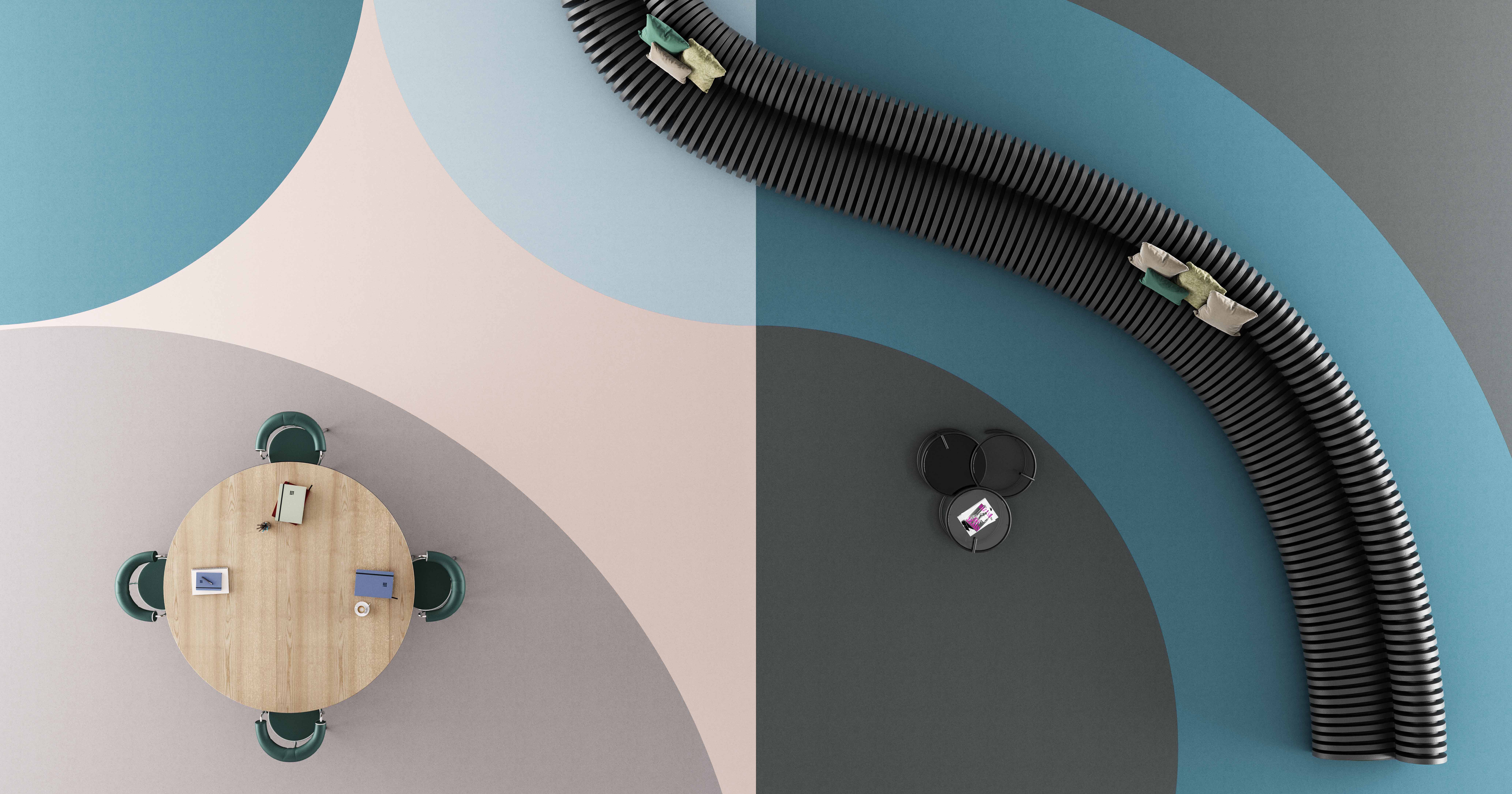Architizer Journal is reader-supported. When you buy through links on our site, we may earn an affiliate commission. Learn more.
ASUS’s ZenBook Pro Duo laptop is an incredibly powerful device designed for ultimate productivity and pronounced creativity. Among the computer’s many features is the ScreenPad Plus, which is an additional touch screen embedded below the main interface. This seamlessly integrated additional interface — running parallel to the keyboard and perpendicular to the upright screen — allows architects and designers to harness their full potential while working. The ZenBook Pro Duo laptop is dubbed the Creator Notebook and has been described by customers as a “professional creative’s dream.”
 The ZenBook Pro Duo is powered by a 10th Generation Intel Core i9 eight-core processor and has professional-grade NVIDIA GeForce RTX graphics and advanced storage capabilities. The result is a quality device that can handle any professional task, such as editing large videos and rendering 3D graphics.
The ZenBook Pro Duo is powered by a 10th Generation Intel Core i9 eight-core processor and has professional-grade NVIDIA GeForce RTX graphics and advanced storage capabilities. The result is a quality device that can handle any professional task, such as editing large videos and rendering 3D graphics.
The device’s ScreenPad Plus works seamlessly with the main display and provides an additional interface to work and create. This dual-screen capability enhances productivity by increasing the visual workspace, allowing users to spread out their work and view images unobstructed. Architects can have two apps or toolbars open simultaneously, making it easier to intuitively shift from one screen to the next and productively multitask. Users can simply drag and drop their desired app on the ScreenPad Plus and leverage the stylus feature, which mimics pen and paper work. Designers can draw, sketch or carefully trace on the device’s ergonomic and highly stable screen.
The computer’s dual screen is especially handy for designers who spend a great deal of time working with tedious software such as AutoCAD, Photoshop and Rhino. The enlarged visual workspace means there is more screen space to lay out images, editing tools and therefore see clearly. The ScreenPad Plus is equally ideal for designers who work remotely and spend a great deal of time on conference calls. By utilizing the dual-screen capability, architects can enter meetings without interrupting their main workstation.
 The device’s superb display is thanks to the OLED HDR1 NanoEdge technology, which produces ultra-vivid colors. The color accuracy on this device is equally made possible through its 100% DCI-P3 color gamut and Delta-E < 2 color accuracy. Moreover, the device has been PANTONE Validated and TÜV Rheinland-certified to ensure a professional-grade device that is safe for the eye. The enhanced color display is ideal for designers whose work relies heavily on color and visual accuracy.
The device’s superb display is thanks to the OLED HDR1 NanoEdge technology, which produces ultra-vivid colors. The color accuracy on this device is equally made possible through its 100% DCI-P3 color gamut and Delta-E < 2 color accuracy. Moreover, the device has been PANTONE Validated and TÜV Rheinland-certified to ensure a professional-grade device that is safe for the eye. The enhanced color display is ideal for designers whose work relies heavily on color and visual accuracy.
Since its first release, the ZenBook Pro Duo has been upgraded to include WiFi 6, which allows designers to create and work while on the go. This robust WiFi 6 capability equally ensures that large-file transfers will be speedily and safely delivered. Designers can feel confident that their most prized renderings, designs and briefs are well stored and delivered securely. Additional upgrades include meeting the MIL-STD 810H military standard. The device has gone under rigorous tests to ensure it can safely and efficiently operate in harsh environments, thus producing a device that architects and designers can confidently rely on no matter where they work.
You can learn more about the ZenBook Pro Duo with ScreenPad Plus here.
For more ways to supercharge your workflow, check out more articles in our Tech for Architects series, which includes our recommendations of Top Laptops for Architects and Designers.









